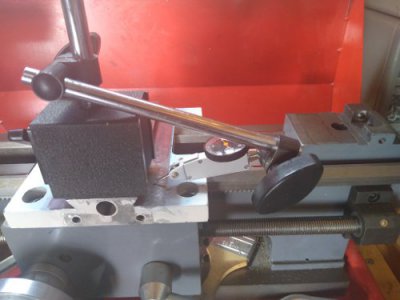When I originally got my mini lathe, I took it completely apart and cleaned off the grit (a huge improvement) but I didn't know what to look for in terms of fit and finish. A year later, in a quest to better understand and improve my machine, I took apart the cross slide, cleaned everything, and test fit the slide without the gib, pressed to one side as it would be with the gib installed. I found that the cross slide rocks front to back on the saddle ways. I believe the saddle ways are convex because I placed the cross slide on the bed ways and it doesn't rock, and I placed a straight edge on the saddle ways and it does rock.
I found a somewhat related thread, but the problem there seemed to be the gib. Should I be thinking about scraping my saddle ways? Is this even a significant problem? It occurred to me that maybe it's worse for the ways to be concave than convex, so maybe they're intentionally slightly convex to allow for more wear. But I'm just spitballing.
I found a somewhat related thread, but the problem there seemed to be the gib. Should I be thinking about scraping my saddle ways? Is this even a significant problem? It occurred to me that maybe it's worse for the ways to be concave than convex, so maybe they're intentionally slightly convex to allow for more wear. But I'm just spitballing.


